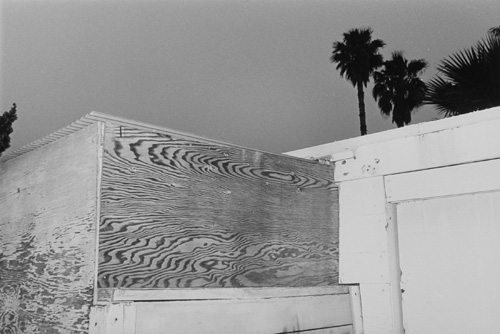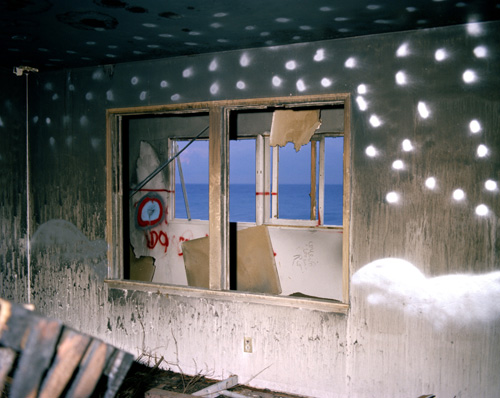John Divola, Theodore Street, 2012, San Fernando Valley, 1973 and Zuma Beach (1978/2006), 1978
“Abandoned houses are one of the few places where you can go and paint anything you want and nobody is going to yell at you” says John Divola.
Los Angeles–based photographer John Divola is perhaps best known for this series of photographs documenting the gradual destruction of an abandoned and oft-vandalized beachfront property at Zuma Beach in Malibu. Without a studio of his own in the 1970s, the artist roamed Los Angeles in search of vacant properties that he could photograph. Using them as his canvas, he sometimes spray-painted his own designs onto their interiors, photographing them before the buildings were destroyed. Reflecting his painterly manipulation of the physical site, Divola’s Zuma photographs skillfully frame spectacular sunset views within these dilapidated structures, making his visually compelling, color-saturated photographs more than just pure documentation.
Divola has taken his camera into a variety of environments over the past four decades. However, it’s the vacant, dilapidated home that have been a constant throughout his career. He has found the structures in the San Fernando Valley and in the shadow of Los Angeles International Airport, along the coast at Zuma and deep into the Inland Empire. The modern ruins provided a studio when Divola couldn’t afford one. Divola could add to a scene that already existed, perhaps with a few strokes of a paintbrush, and then photograph it. They remain a part of his work, even now that he has his own space amidst the business parks and storage units of Riverside. Ultimately, these venues held an intrigue that went beyond practicality.
“It wasn’t a blank canvas,” says Divola. “It was something that already had a sense of place and presence and prior activity.”
It’s the activity that captures Divola’s eye. “If someone kicks a hole in the wall,” he says, “I’m really interested.”


